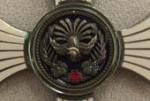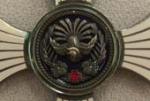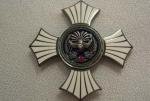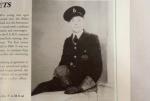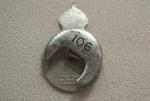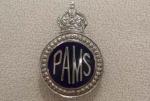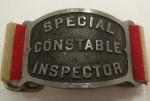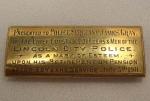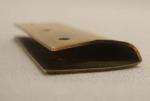-
Posts
6,486 -
Joined
-
Last visited
-
Days Won
10
Content Type
Profiles
Forums
Blogs
Gallery
Events
Store
Everything posted by Brian Wolfe
-

EK 1939 My first Iron Cross, opinion please
Brian Wolfe replied to kapten_windu's topic in Germany: All Eras: The Iron Cross
Congratulations on a great addition to your collection,I don't know how missed this when it was first posted back in December. Purchasing the first EK is a lot like stepping on ice that is covering a steep hill, there's nothing you can do but enjoy the slide and hope you survive. A good one, I'm sure it will be the first of many. Regards Brian -

EK 1939 Another Virginity Gone! My 1st EK2
Brian Wolfe replied to FrontlineAntiques's topic in Germany: All Eras: The Iron Cross
Hi Dan, A very nice addition to your collection. I recall my first EK (I and II)it's a great feeling. I have to say that after adding several more to my collection I still get excited when I find a new one. If you decide to clean it up a bit plese post the results. Personally I would leave it as is but, as has been said many, many, times here on the GMIC, that's a personal preference. Regards Brian -
I'll try to get a closer view of the middle of the medal. Regards Brian Sorry, that looks like all I can manage as far as a closer view. :angry:
-
Hello Everyone, Once in a while you see something that, while it may not be complete, you just can't resist adding it to your collection just because it is so darn nice looking. This Red Cross Society Corporate Merit Medal should have been mounted in a frame with a ribbon bow for presentation but for some reason it either escaped or was the survivor of an accident involving the original framed award. Perhaps it was part of a surplus stock left over when they stopped awarding the mounted medal in favour of a plaque, it's anyone's quess. This is silver and it has two tabs on the reverse that would have affixed it to the backing of the mount. So why purchase it? I think just looking at the photos will answer that. Such nice detail. I hope you like it. Regards Brian
-
Here is a nice little lapel button to the Police Auxilliary Messenger Service or P.A.M.S. The 20 X 30 mm button was made by Fattorini & Sons Ltd. Bradford Works, Birmingham and is numbered 106 on the back. The device that goes through the button hole is twisted somewhat otherwise this badge is in excellent condition. Since many forces employed the services of the P.A.M.S.s I have taken an excerpt from the Staffordshire Police 150 Anniversary Commemorative Magazine printed in 1992 as a brief history of the P.A.M.S. since it should be generic to all Police Services of the time. During the Second World War young men aged between 16 and 20 were recruited into the Police Auxilliary Messenger Service (P.A.M.S.) which was the forerunner of the present day Cadet Service. They were issued with a uniform and performed such jobs as clerks, telephonists and messengers. The years following the end of the war saw the P.A.M.S. renamed as the Police Cadets and, although they received little training, they continued to be employed at Police Stations. The first course providing training for Police Cadets was held in 1960. It was ten weeks long and sought to improve confidence, to continue their education and also to teach new skills such as first aid, swimming and life saving. Today Police Cadets follow a two year training programme at Headquarters followed by an attachment at an operational police station. Although training is now over a much longer period, the aims of thirty years ago [sic] remain the same - which are to provide the confidence, maturity and ability required of a police officer.
-
Very nice indeed. I hope to add one to my collection someday. Regards Brian
-

3rd China Medal 1900 - HMS AURORA
Brian Wolfe replied to a topic in Great Britain: Orders, Gallantry, Campaign Medals
Hello Darrell, Congratulations on one of the best posts I read in a long while. I've said many times (off line) that this is the type of post we need to see more of on the GMIC. On top of that the medal is magnificent, I can't say enough about it, so Ill stop now. Regards Brian -
Since eBay is an auction house, so-to-speak, anything is possible and I suppose should be expected. I've paid too much for some items because I JUST HAD TO HAVE IT, and other times I couldn't believe I was the only bidder and the cost was very low. It looks like in the case noted above it was a day when there were a couple of "have to haves" bidding, for a change I was not one of them. Regards Brian
-
It reminds me of one of the FN FAL bayonets, with the metal handle. Also, yes, the sten had a bayonet, it was the standard WWII spike and it looked like the spike was welded to a large piece of pipe that fit over the barrel's hand guard. Another model of sten had lugs so the that standard WWII spike bayonet could be used, if memory serves me. Regards Brian
-
A fine example Mervyn. I used to have several different German saw backs in my collection years ago when I specialized in bayonets. Alas the whole collection has moved on. Thanks for bringing back some fond memories. Regards Brian
-
Hello Everyone, This item just arrived and as may be seen in the photos it is a brassard for an Inspector in the Special Constabulary. The belt is red and white which is different from others I've seen which are usually black and white. The plate itself is 85mm by 64mm and is much like the style manufactured by Hiatt & Co. B'ham though no such markings are on this piece. Hiatt and Company made brassards from aluminum, as is this one, and the majority are more rectangular and by that I mean the sides were straight rather than curved as in this specimen. I do have maked Haitt brassards that are round so it is obvious they were not restricted, by company design policies, to produce only rectangular brassards. There is a little design styling on this piece along the border in that there are two "points" on each side. I have an unmarked oval specimen of the Haitt style to an Inspector with the wording in a different order. As you can see this one says SPECIAL CONSTABLE INSPECTOR while my oval specimen has the word INSPECTOR in the centre of the brassard plate. It may be a good idea to mention here that these were made and used during the Great War period (1914 to 1918). I sometimes forget to mention that fact when posting brassards, assuming that the reader has been following the posts in this section. As well the reader may be new to this area of collecting and to leave out what would seem obvious would be doing a disservice to the novice collector. I would like to say that this and my other specimens of similar bordering, background and lettering are all of Haitt manufacture but that would not be in keeping with good historical research and, of course, would be pure speculation. The same holds true with any unsupported suggestion that the red and white belting may have signified a higher ranking officer. If any of the members would like to weigh in on this topic I would be most happy to hear from them. An interesting point here, which may only be in the dark confines of my own mind, is that we may be moving into an area of collecting and reserch equal to the German collectors on the forum. They refer to specimens as being Assman etc. and now we can refer to brassards (or at lest some of them) as Haitt. Ok, that's a stretch of my imagination, but perhaps only due to the relatively small number of collectors intetrested in brassards. I hope you like my latest addition to the police section of my modest collection. Regards Brian
-
Hello Everyone, This items just arrived and while it is not a medal it does represent the career of a police officer from Lincoln City. There is no need to copy what is engraved on the brass plate here as I believe the photo shows that very well. With a retirement date of 1911 and with 30 years of service it would place his date of joining the service at 1881. The plate measures 75mm by 28mm. As may be seen in the photos this was slid over some object and was secured with three screws or other such fasteners. Whatever the plate was afixed to was 5mm in thickness, judging by the space left for this purpose. The seller did not show this in the photo of the item and I had originally assumed it had been glued onto a picture frame or something along those lines. If this were flat and made today I would think it would have been attached with double sided tape. Any ideas as to what this was attached to? Unlike most medals there is a good deal of information presented on this specimen, however if anyone has any more information they could share about this police sergeant it would be greatly appreciated. Regards Brian
-
I quite often think about the officers who received the Jubilee and Coronation Medals and wonder about the era they lived in. As mentioned before they would have read about Jack the Ripper and perhaps served in or near White Chappel. The other night my wife and I were watching an episode of Sherlock Holmes on television and I said that there was a good chance that some, if not all, of the poice officers named on medals in my collection would have read about Sherlock Holmes during the actual time his exploits were in the newspaper. To this she turned, looked at me with a pained expression and ask, "You do know he wasn't real...right?" Funny woman! Perhaps this is off topic but I wanted to share that with the members who are interested in these medals and the times. Regards Brian
-

Austria-Hungary 1848-1898 Franz Josef jubilee medal
Brian Wolfe replied to Richarddwh's topic in Austro-Hungarian Empire
I too recall this being discussed, a check of that section should give the answer, though Hugh has done so already. An interesting solution to keeping one's white uniform in tip top condition. Regards Brian



